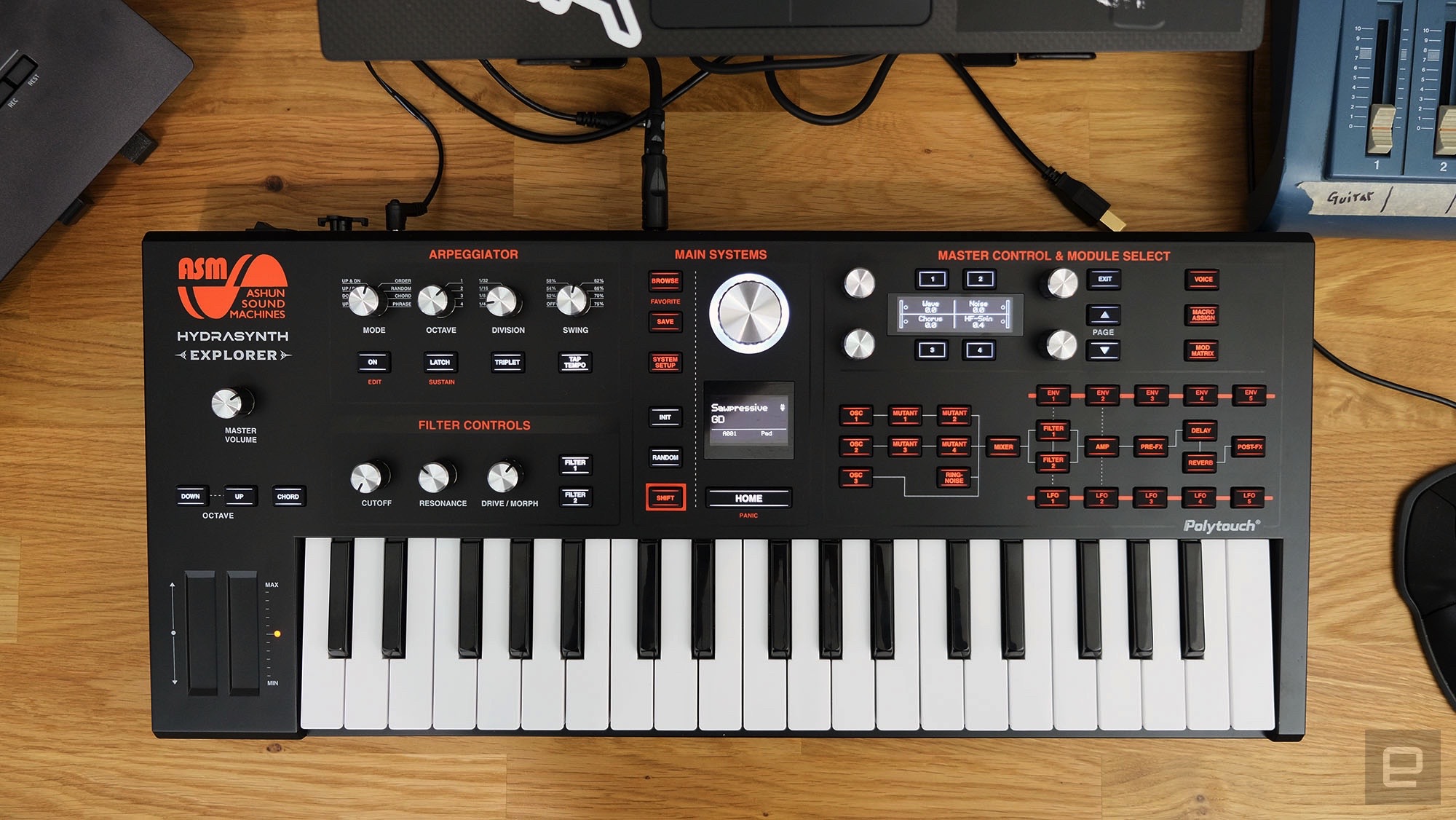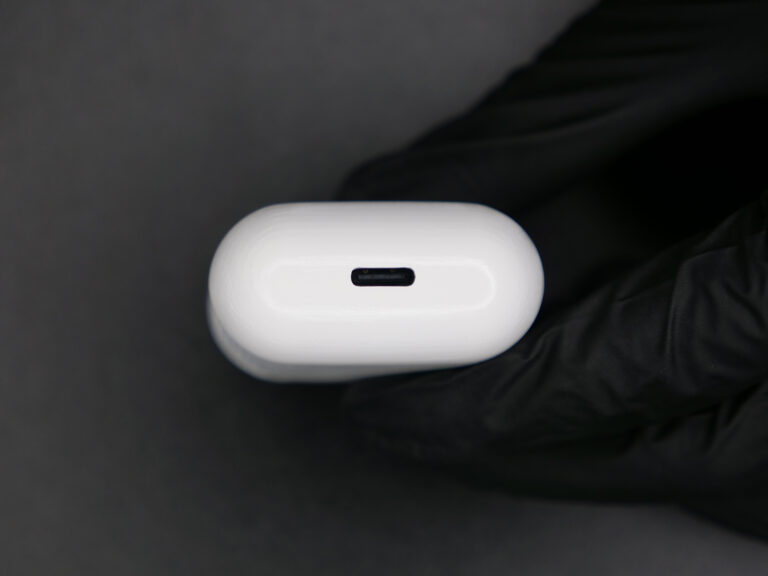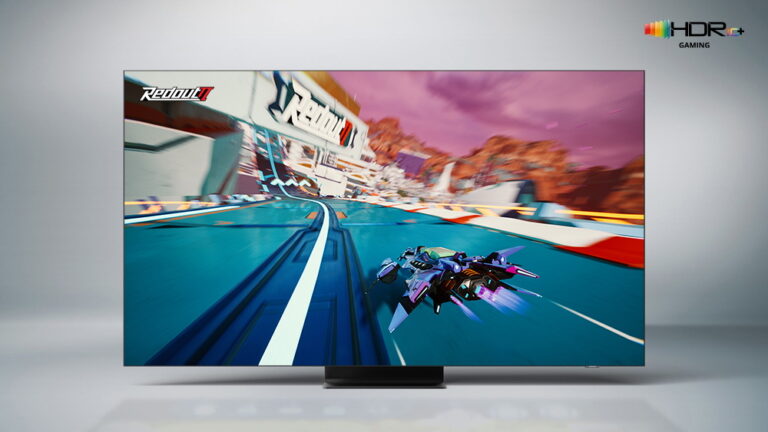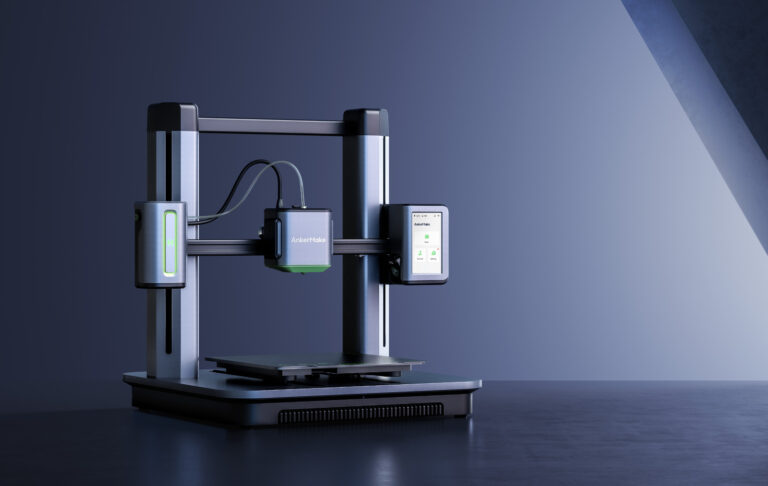Hydrasynth Explorer review | Engadget
Image Credit: Terrence O’Brien / Engadget
As you move from left to right in the signal chain you’ll next encounter the Mutant 1-4 buttons. Press one and the OLED on the right brings up the parameters. (Noticing a trend?) Depending on what Mutator you select using the top left encoder you’ll see different options here to control. But at its most basic, you just turn one knob to choose, say PWM, then another set the wet/dry value you want.
There are eight different Mutators to choose from, but I want to focus briefly on PW-ASM, or Pulse Width ASM. There are two things that make pulse width modulation special on the Hydrasynth. One, you can use it on any waveshape — usually PWM is associated with square waves. And two: in ASM mode you can create your own custom pulse width patterns. PW-ASM breaks a wave into eight distinct sections and you dial in the amount of modulation around each of the slice points. It’s not exactly the easiest thing to explain, but suffice to say I don’t know of any other synths out there with this feature. (If you do, please tell me in the comments.)
Under the Mutants is the button to bring up the ring modulation and noise parameters, and then as you follow the line illustrating the signal chain to the right, you see they all feed into the mixer. Here you can dial in the volume of each oscillator, the ring mod and noise section, as well as panning for each. And this is also where you’ll decide how much of each to send to which filter and whether the filters are in series or parallel. This is one of the sections with the most pages of options to scroll through, but it’s still straightforward. Just press the up and down buttons next to the display until you see the parameter you want, then turn the knob next to it.
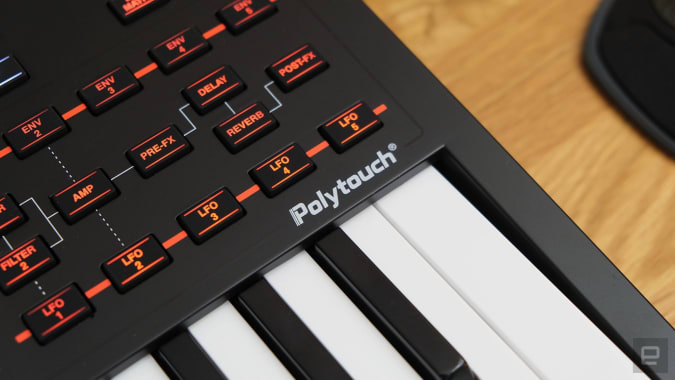
Terrence O’Brien / Engadget
After the mixer, you’ll see the signal chain branches off again with your envelopes (ENV) along the top, LFOs along the bottom and down the middle your audio signal, including filters, amp and effects.
By default ENV 1 and LFO 1 are connected to the filters, while ENV 2 and LFO 2 are connected to the amp. There’s no way to break the connection between ENV 2 and the amp, it will always define the total volume of your sound. That doesn’t mean you can’t control the volume of the oscillators separately; it just means you have to get creative.
So if you wanted OSC 2 to come in slightly after OSC 1 you could use ENV 3 to control it, just with a slightly longer attack time than ENV 2. To make the connection you could press the mod matrix button at the top and scroll through all the options. But the easier way is to hold the ENV 3 button, then press the mixer button. Then those two modules will be automatically connected and all you have to do is pick the parameter you want (OSC2CVol in this case) and dial in the depth. It’s also worth mentioning that the Hydrasynth’s envelopes have six stages — delay, attack, hold, decay, sustain and release — as opposed to the more common ADSR. That means you can actually delay the start of the envelope for a certain amount of time after a key press.
Even more interesting are the LFOs. While you can use them to create whooshing filter sounds and gentle pitch warbles, you can also use them as a sequencer. Step mode lets you create a customized modulation pattern of up to 64 steps.
On the fourth page of the LFO settings, though, you’ll find the SemiLock option — this is where the magic happens. See, Hydrasynth doesn’t have a proper sequencer, but you can use the LFOs locked to semitones thanks to the latest firmware. So, with fairly minimal work, OSC 2 could come in behind OSC 1 and play melody over a pad. This is just one example of how to use this power. You can sequence anything from filter cutoff to the wet/dry mix on the reverb to the detune or glide time, or even the parameters of the Mutators. This level of control opens a whole world of possibilities.
At the end of the signal chain you have four effects slots to work with: one pre-fx, one post-fx and sandwiched between them are dedicated delay and reverb modules. There are a few different varieties of the latter two. The reverse delay is excellent, and while the plate and hall reverbs are solid, cloud is my favorite setting.
The post- and pre-fx sections have the same options to choose from, including phaser, distortion, compression, rotary, tremolo and more. But my favorite to stick at the end of almost every patch is Lo-Fi. You can turn down the sample rate to get some crushed digital sounds and there are various filter types to choose from that give you the quality of something being played through a phone or over a radio. It’s just a nice touch to keep everything from getting too crisp and clean.
Here’s the thing: This is only just scratching the surface of what the Hydrasynth is capable of. There are a number of options in the Voice menu for adding depth and warmth, like the sort of vague Analog Feel. There’s an incredibly capable arpeggiator with eight different modes. There’s a macro section where you can assign multiple parameters to a single knob to dramatically transform sounds in a performance-friendly way. And I barely even mentioned the keyboard which has polyphonic aftertouch — something basically unheard of at this price point.
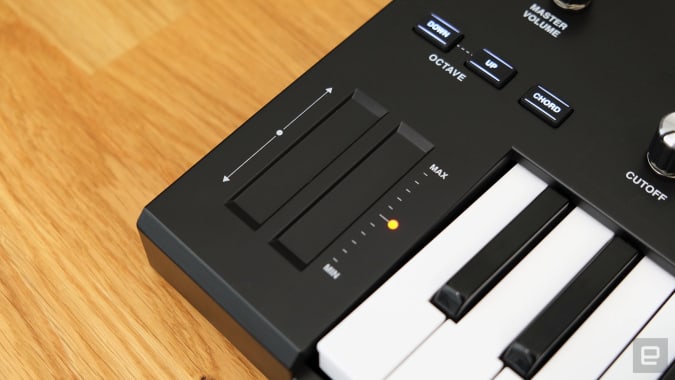
Terrence O’Brien / Engadget
The Hydrasynth Explorer, at least under the hood, is virtually indistinguishable from it’s larger counterpart the Hydrasynth Keys, which costs almost twice as much. So what are you giving up here? Well, one the Explorer has mini keys instead of full-sized ones, but that might not be a con for some people like myself with small hands and limited piano skills. There’s also no proper pitch and mod wheels, instead you get touchstrips; they’re fine, but not nearly as accurate. The biggest loss is the reduced number of controls. The filter knobs have been reduced from five to three, and there’s only four macro / parameter knobs, versus eight on the larger models. But honestly, these are minor sacrifices to reach this price.
The one last thing to address is that ASM calls the Hydrasynth Explorer “portable,” but that’s only true in the most technical of senses. In addition to the included AC adapter you can power it with eight AA batteries — which is not a trivial amount — for three to four hours. Plus, the Explorer weighs 7.5 pounds and it’s nearly 22 inches long. Sure, that’s petite compared to the 22 pounds and 32 inches of the Hydrasynth Keys, but this is not something that you’re gonna toss in a backpack and bring to the park on a whim. While it’s easy enough to toss in the trunk and bring to a jam session, that ASM doesn’t include or sell a travel case for it, kind of undermines the portability pitch.
